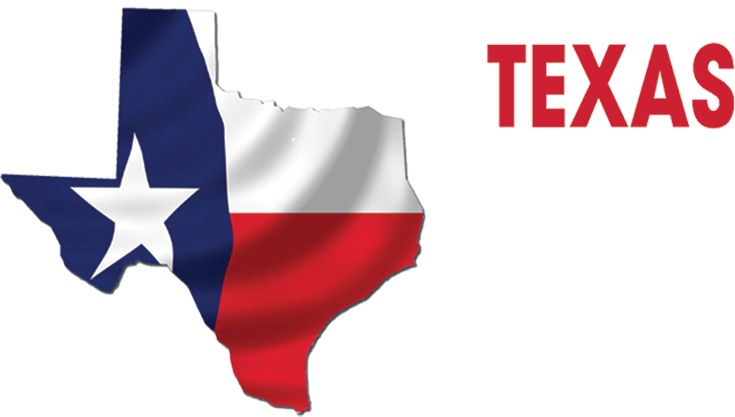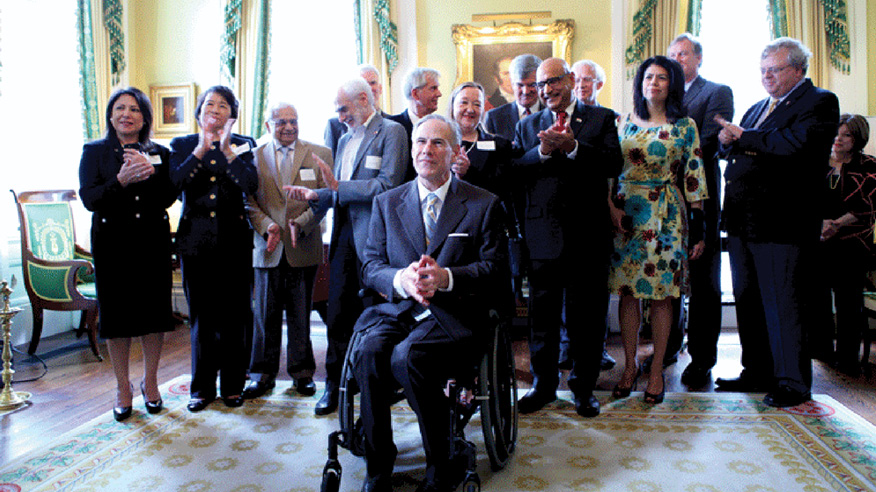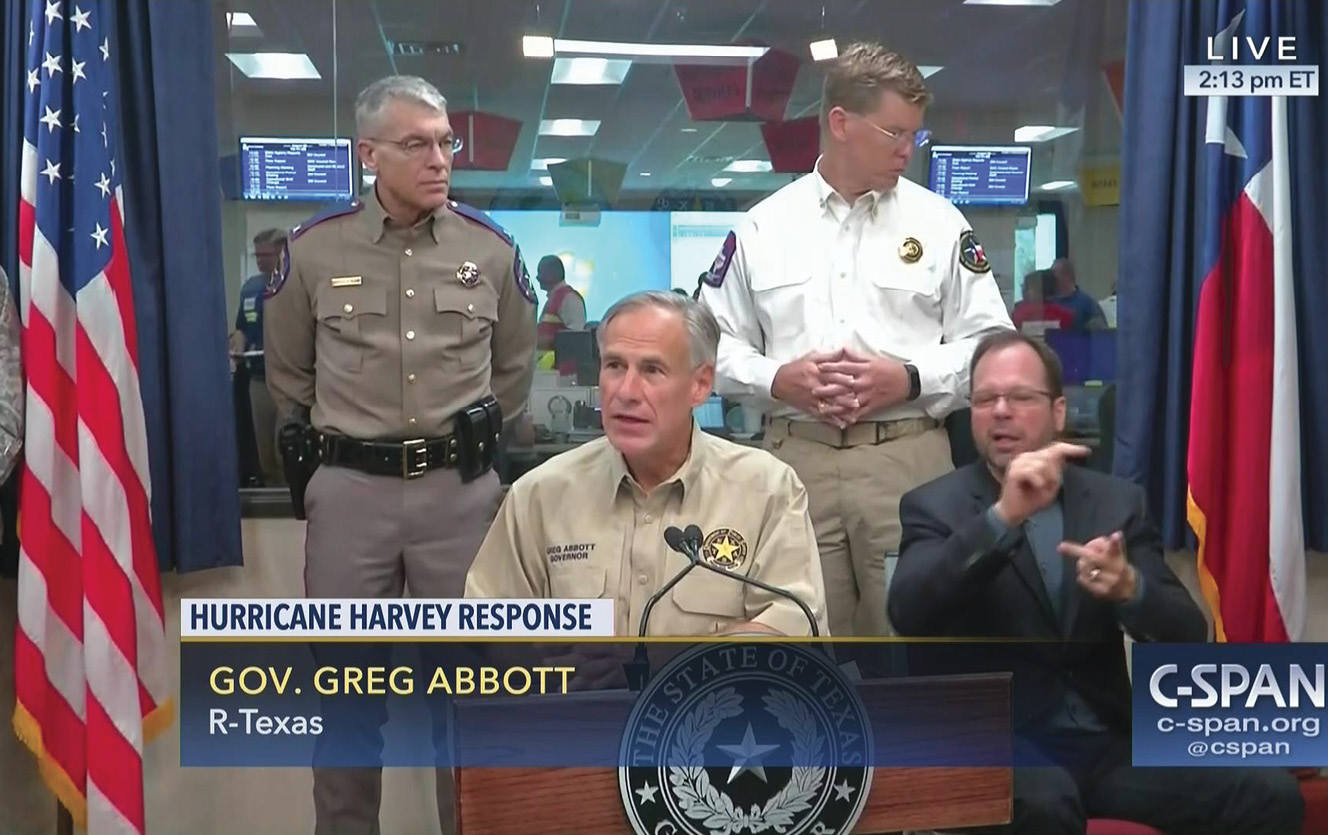- Home
- Media Kit
- Current Issue
- Past Issues
- Ad Specs-Submission
- Ad Print Settings
- Reprints (PDF)
- Photo Specifications (PDF)
- Contact Us

![]()
ONLINE

Four Pillars for Economic Growth
Editors’ Note
As the 48th Governor of the State of Texas, Greg Abbott continues to build on his long record as a conservative leader who fights to preserve Texas values of faith, family, and freedom. Prior to his election in 2014, Abbott was the 50th and longest-serving Attorney General of Texas. He also previously served as a Justice on the Texas Supreme Court and as a State District Judge in Harris County. After graduating from The University of Texas at Austin with a B.B.A. in finance, he earned a law degree from Vanderbilt University Law School. Shortly after graduating from law school, he was partially paralyzed by a falling tree while jogging.

Will you discuss each of the four pillars you’re focused on for Texas and the success you’ve had in each of these areas?
There are fundamental pillars that cause the Texas economy to perform well. These pillars are scalable and replicable by other states, so we hope that they serve as a model for other states to structure their business climates and even for the U.S. to structure its business climate.
One of the pillars is keeping taxes low. Every session that I’ve been Governor, we have cut taxes, and that is on top of efforts by my predecessor to keep taxes low. We know that in Texas, by keeping taxes low, it puts more money into the wallets of individuals, homeowners, and business owners who can better use those funds for economic development and personal enhancement. They know how to spend their money far better than the government does.
The second is to reduce regulations. Far too often, regulations are a hindrance for economic development and a hindrance to individual liberty. It’s that liberty, be it as individuals or as business leaders, that spurs economic growth and individual expansion. We are looking to empower individuals and business owners as much as possible and one of the best ways to do that is to reduce the heavy hand of the government.
The third is workforce development. We know the future of our great state is going to be based on the quality of our workforce, so we focus heavily on fundamental education as well as specialized education to develop a workforce that addresses the needs of our employers.
The fourth pillar is that Texas has long been a right-to-work state and that ensures we provide the type of workforce quality that allows employers to provide a great product at a lower cost.

Governor Abbott honors Texas A&M researchers at a reception
Why aren’t these pillars being implemented more across the country when they’ve made such an impact in Texas?
There are some legacy problems in some states that are difficult to overcome. Some states have gone down a pathway of greater government dependence and greater ties to unions that want to dictate those perspectives.
We have seen challenges in states like California, Illinois, and New York that are difficult to overcome and make it harder for businesses to operate. I mention those states because those are the leading states from which people are coming to Texas. I personally hear from CEOs from those states about the challenges posed by the government trying to run their lives through heavy-handed regulations, taxing them out of profitable business operations, or by not providing the type of workforce that businesses need.
The more that other states can apply these four principles, the greater the economic freedom and the greater the opportunities that will exist for the citizens of those states.
There are fundamental pillars that cause the Texas economy to perform well. These pillars are scalable and replicable by other states, so we hope that they serve as a model for other states to structure their business climates and even for the U.S. to structure its business climate.
How do you define the challenge in reforming the K-12 education system and what are the keys to making significant impact?
The main efforts in advancing our educators and schools is to keenly focus on STEM-based skills to educate our students for the workforce of tomorrow.
We are providing our teachers with very special tools, both reading readiness and math advancement. We will continue to inculcate in our students not only the skill sets that will help them succeed in school, but also succeed in the workforce.
Also, once we get to the high school level, we form partnerships between our public high schools and our high-demand employers to make sure there is an alignment between what the schools are doing and the needs of our workforce.

Governor Abbott giving a briefing on Hurricane Harvey
How critical is a strong public/private partnership when it comes to addressing these kinds of challenges?
A collaborative working relationship between the state and the private sector is essential. We do that in part through the Texas Education Agency as well as the Texas Workforce Commission and programs we’ve created in Texas so that our schools are partnering with the private sector. By 2030, we want 60 percent of young adults to have at least a two- or four-year higher education degree. Through that pathway, we are not only ensuring the workforce that employers need, but we’re ensuring a higher quality of life and living standards for millions of Texans.
What is the key competitive advantage that Texas offers and how do you get the message out about the Texas brand?
Texas has no income tax and the regulatory environment is far more flexible than some of the other states.
Texas is also in the early stages of the largest infrastructure buildout in the U.S. right now. We are adding $70 billion in infrastructure funding to build out our roads so businesses can transport goods faster and citizens can get to where they need to go more quickly.
In addition, Texas has a top-quality workforce. That has been proven across the spectrum of employer type, be it medical, engineering, technology, or anything else. The quality of the workforce comes, in part, because we’re doing a great job at graduating both high school and college students with the right skill sets. It’s also in part because of the work ethic of Texans that employers embrace.
With the lack of action happening right now in D.C., do results have to be generated at the state level and will governors be the ones to drive real action?
There has to be a collaborative effort of states and local governments and the federal government. What the state of Texas did is what families have to do, which is to establish priorities. We knew, based upon our citizens’ demands, that we needed to build more roads, so we dedicated funding from our budgets for the next 10 years and were able to allocate $70 billion without raising taxes, fees, tolls, or debt funding in order to do it – it was a matter of prioritizing funds.
For the larger efforts, ranging from improving our interstate highways to improving interstate movement of goods, including through the main ports as well as at airports, the proposals the federal government has been talking about are very important complements to improving both transportation and infrastructure.•